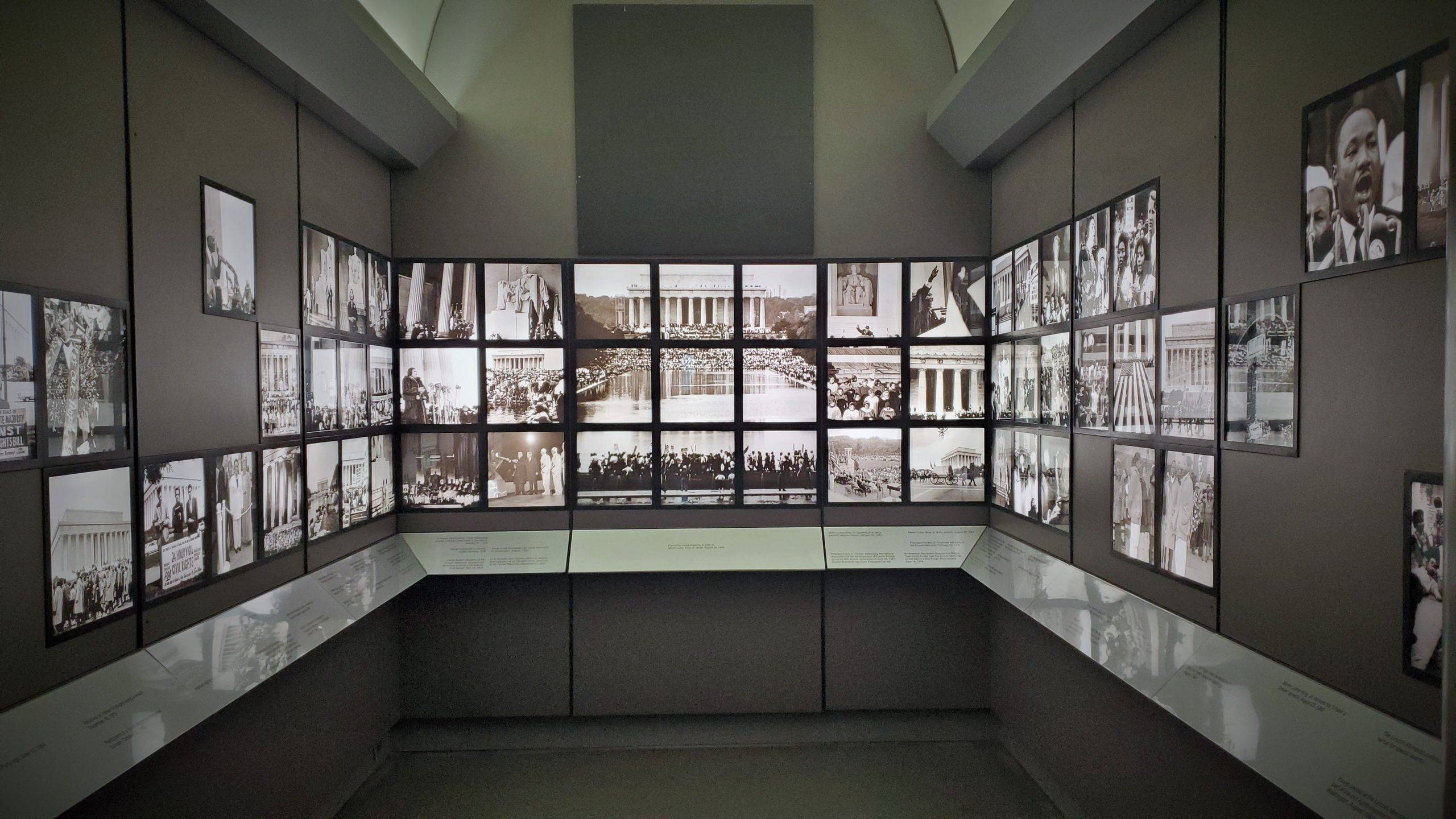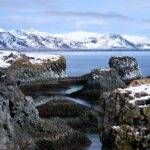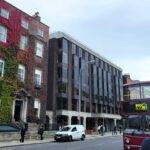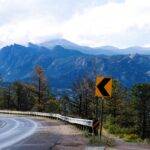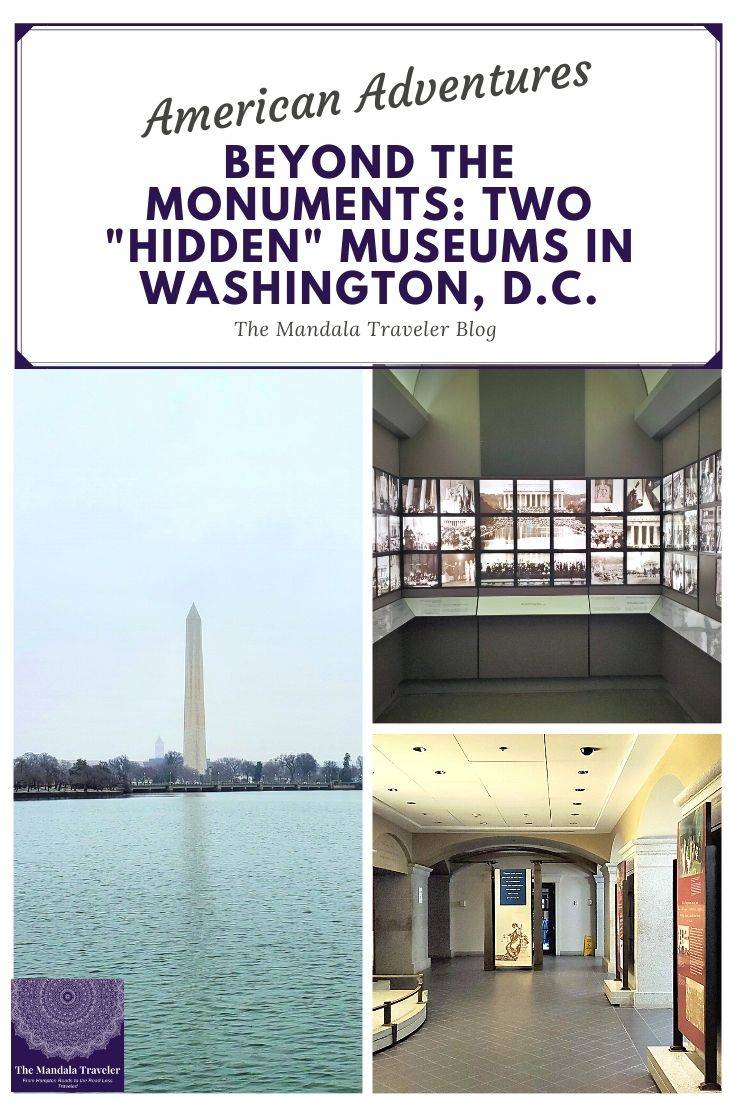Last weekend we had the first-time experience of visiting Washington, D.C., in the snow! It was a cold but memorable excursion to see several of our national monuments sprinkled in a white frosting of snow and all the cherry blossom trees encased in glass-like molds of ice. I’ve visited D.C. several times over the years, and it’s always been a bustling hub of activity, but this trip was very different. We had no trouble finding parking, many of the museums and shops were closed, and comparatively few people were out and about.
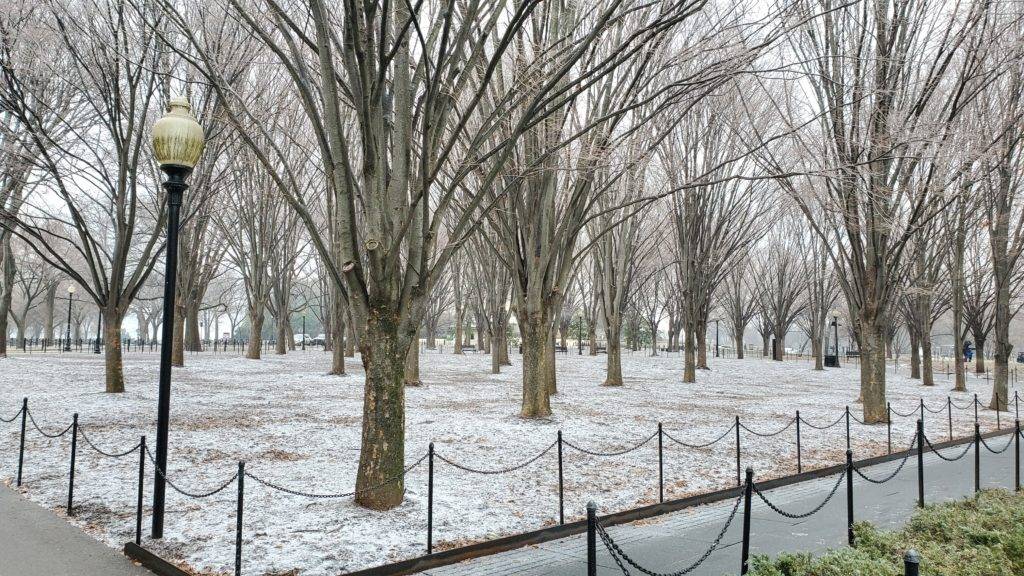
One of the most startling changes was the huge barbed-wire barricade surrounding the Capitol building. Soldiers were stationed around the fence, and they’d even diverted some traffic to give the area a wide berth.
Thankfully, the Capitol building wasn’t our destination for the weekend. Instead, we struck out to take a tour of the National Mall, visiting several of America’s impressive monuments on the way.
We started at the Lincoln Memorial and meandered around to the Korean War Veterans Memorial, Franklin Delano Roosevelt Memorial, Martin Luther King Jr. Memorial, and Thomas Jefferson Memorial while catching plenty of great views of the Washington Memorial across the Tidal Basin.
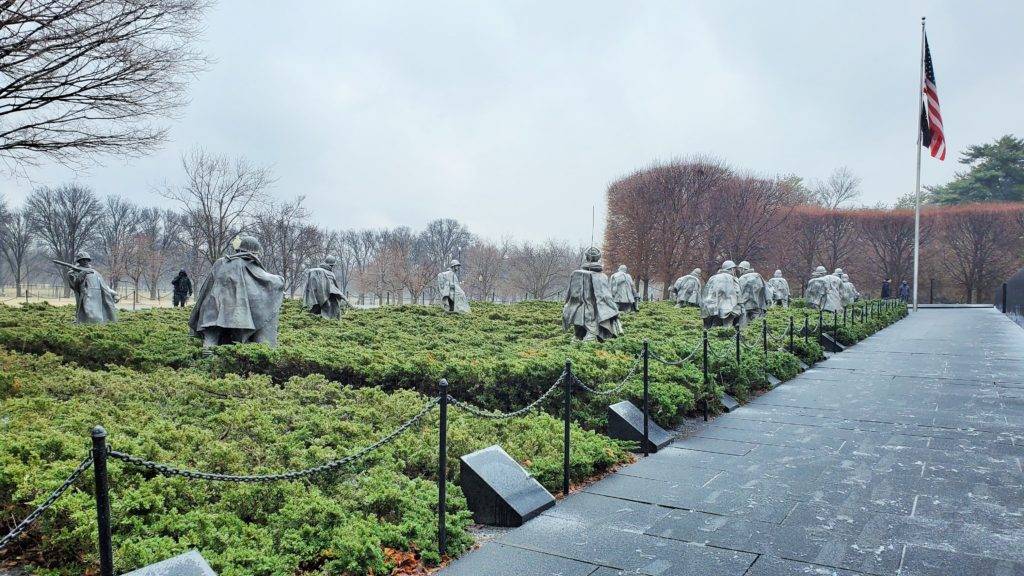
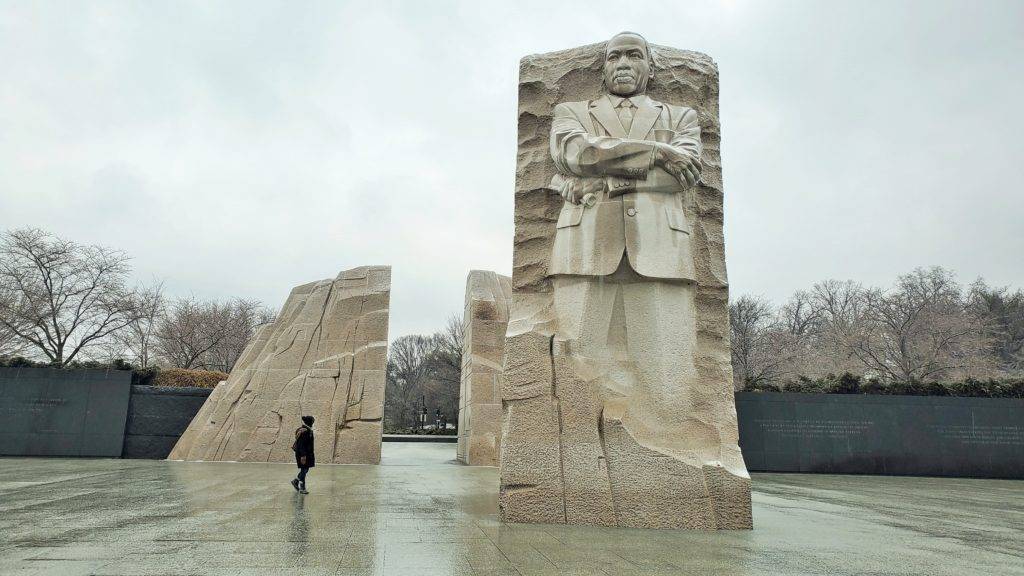
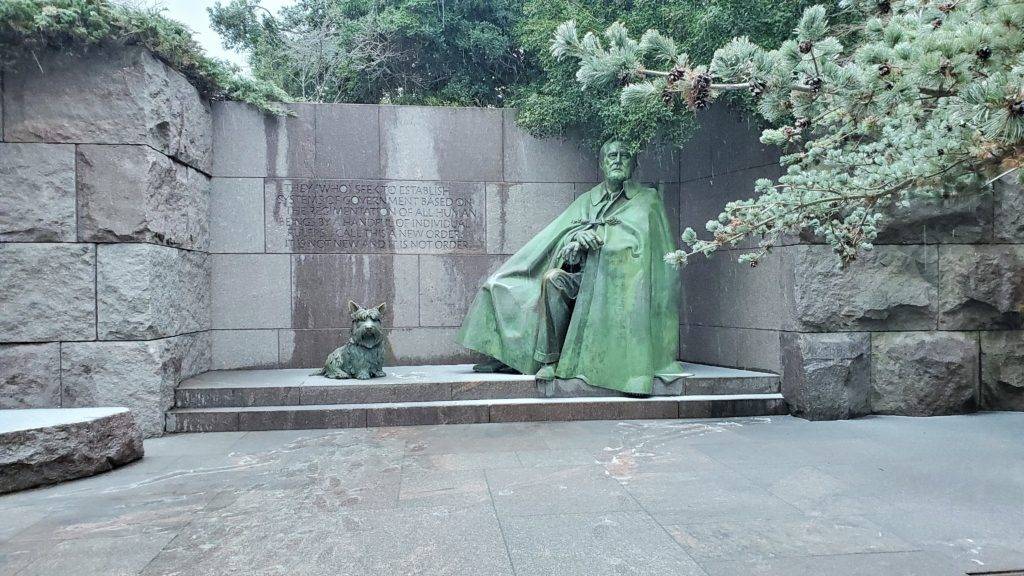
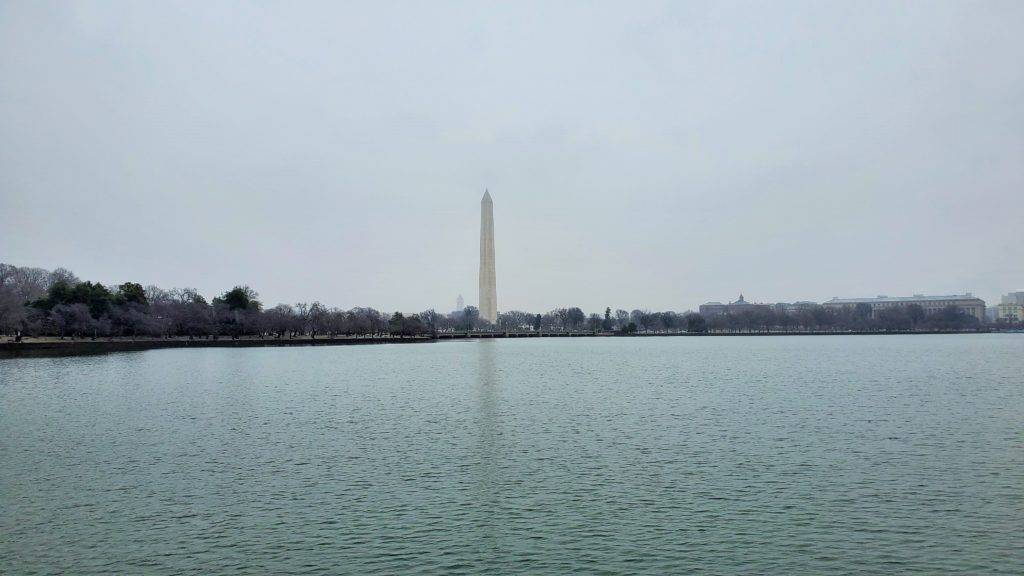
If you ever get up to D.C., I highly recommend dedicating a day to taking a tour of the National Mall and visiting each of the lovely memorials stationed there. You’ll learn a lot about America and gain an appreciation for the people who’ve made an immense difference in our country. Plus, just about everything is free, so it’s a win-win!
Today, however, I want to zone in on just two of the monuments: the Lincoln and Thomas Jefferson Memorials.
You see, despite visiting the Lincoln Memorial several times in the past, we discovered something for the first time on this visit: a museum below the monument! The same thing happened at the Jefferson Memorial.
For some reason, these “hidden” museums are not promoted at all, even on their websites. In fact, we only discovered the one under the Lincoln Memorial because my husband went into “National Treasure” mode and started exploring. I’ve talked to several people about it this week, and only a couple of them knew that there was more to the monuments than the impressive statues!
Both museums are small, yet they contain an incredible amount of information about the men they honor and the creation of the monuments. I’d hate for you to miss out on your next trip to D.C., so I wanted to share that information with you this week!
Take a Virtual Tour of these Hidden Museums on YouTube!
The Lincoln Memorial Museum
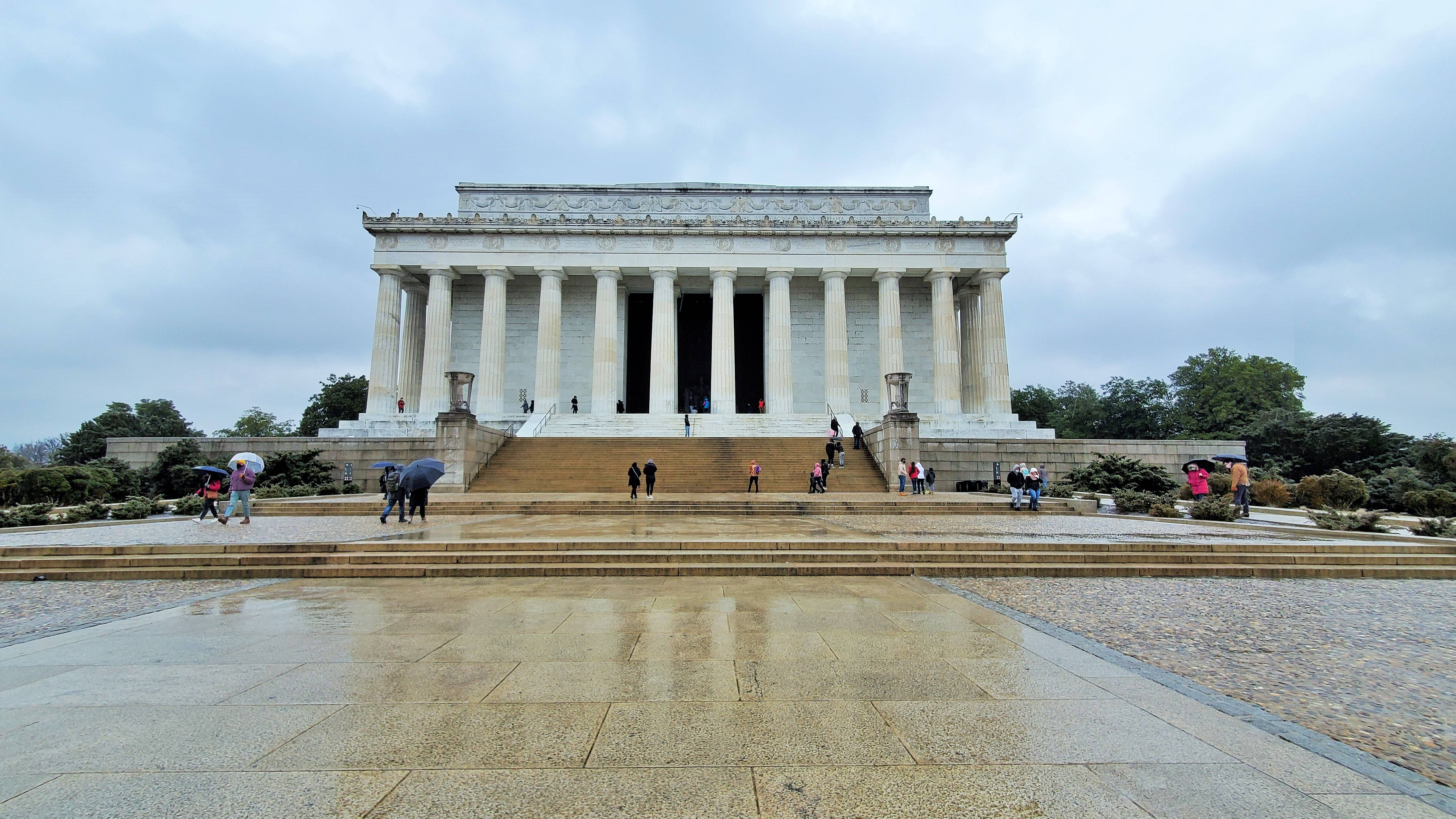
If you’ve ever been to the Lincoln Memorial, you know what an impressive structure it is. The memorial was designed to reflect the ancient Greek Parthenon, with 36 tall columns representing the number of states in the Union when Lincoln died. The massive statue of Abraham Lincoln sitting inside was carved from several pieces of Georgia marble by the sculptor Daniel Chester French, who wanted Lincoln to look both powerful and kind.
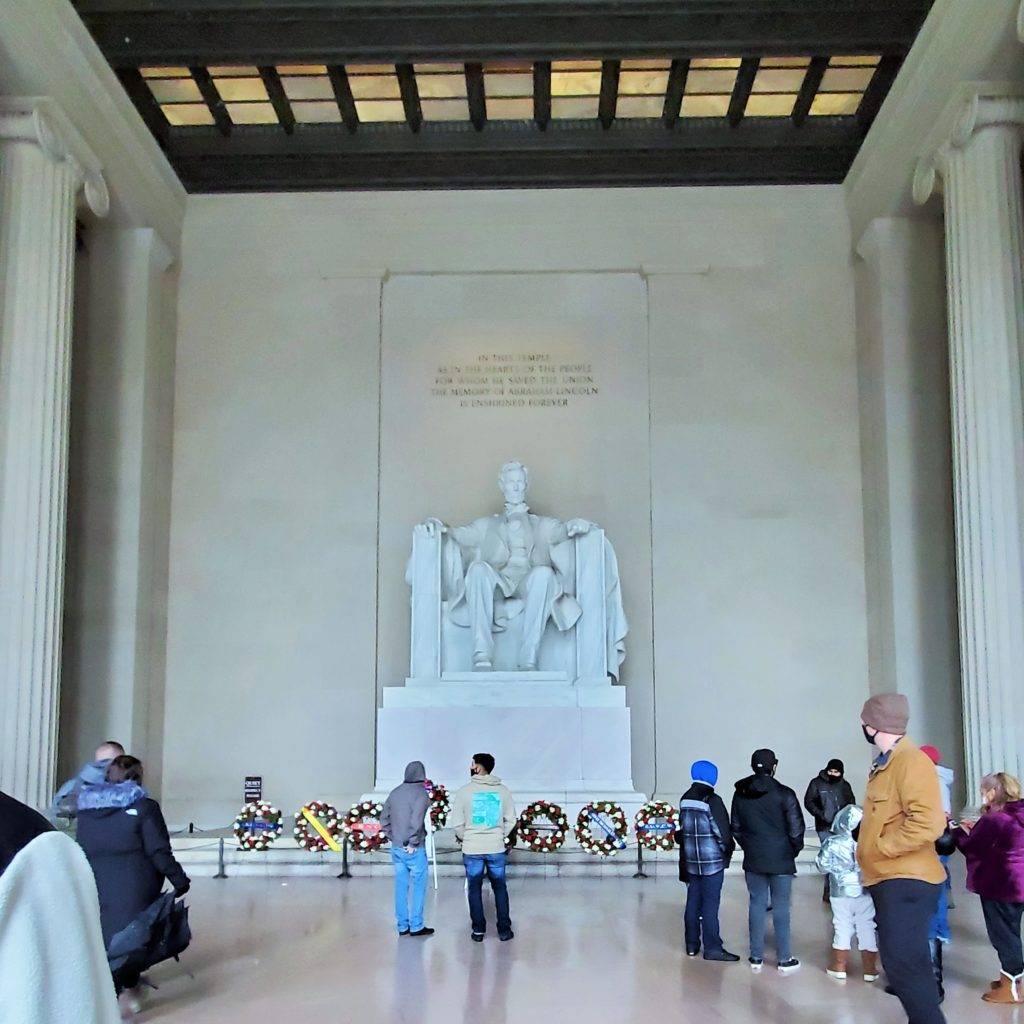
On the walls, you can read snippets of Lincoln’s Gettysburg and Second Inaugural Addresses, bordered by giant murals depicting the principles that Lincoln lived in his life.
This area alone is worth a visit. But if you’re interested in an in-depth look at Lincoln’s speeches, the momentous occasions that took place at the memorial throughout history, and the process of building the memorial, be sure to stop by the “hidden” museum below the monument.
Finding the “Hidden” Museum
You can get there two ways: 1) Climb the stairs to the statue and take a left; there is a small door that leads to a single elevator, which will take you down to the museum and restrooms. 2) Climb the first two sets of steps and keep an eye out for a recessed door on the far left side that leads directly to the museum.
Exploring the Lincoln Memorial Museum
The museum is a one-room exhibit with a lot of information packed in. During COVID-19, be sure to follow the footprint markers to do the museum in one big loop.
One-half of the room is dedicated to Lincoln’s words, with large stone slabs engraved with quotations from various letters and speeches. His words are organized by topic, allowing visitors to see his views on slavery, war, freedom, and more in an organized manner.
Further along, you can learn about the design and construction of the Lincoln Memorial, which I briefly mentioned above. Several different architects were asked to design a distinct and universally appealing monument, resulting in more than one pyramid/ziggurat plan. How different that would have been!
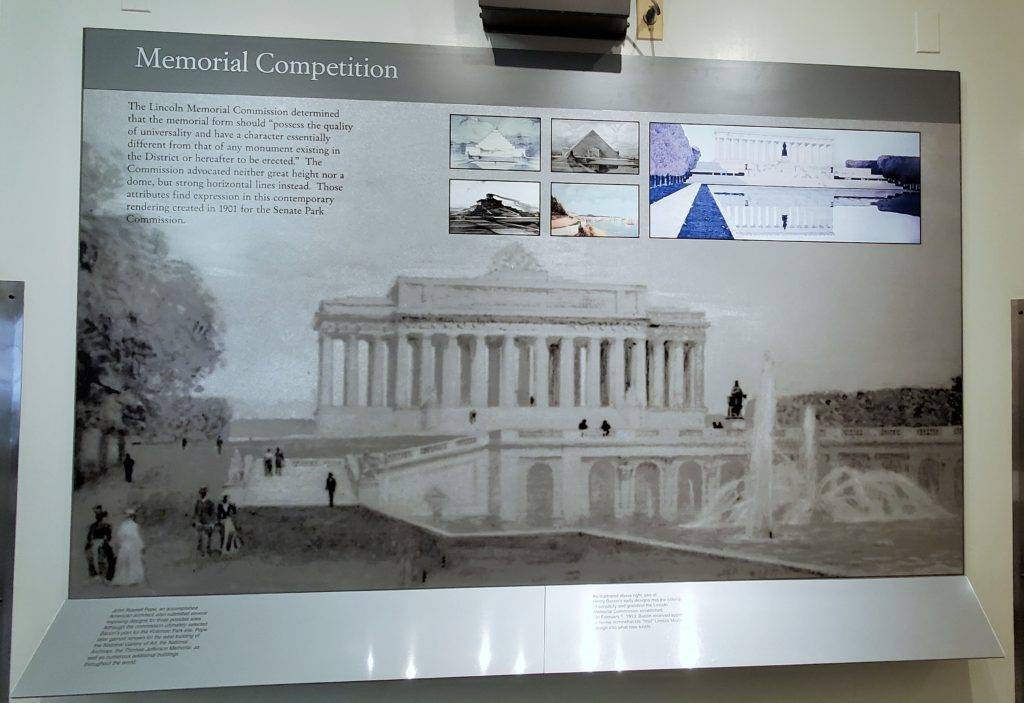
Finally, an eye-catching black and white 270-degree mural portrays historic moments at the Lincoln Memorial, including Martin Luther King Jr.’s “I Have a Dream” speech, Marian Anderson’s Easter Sunday concert in 1939, and many other significant Civil Rights gatherings from the past 100 years.
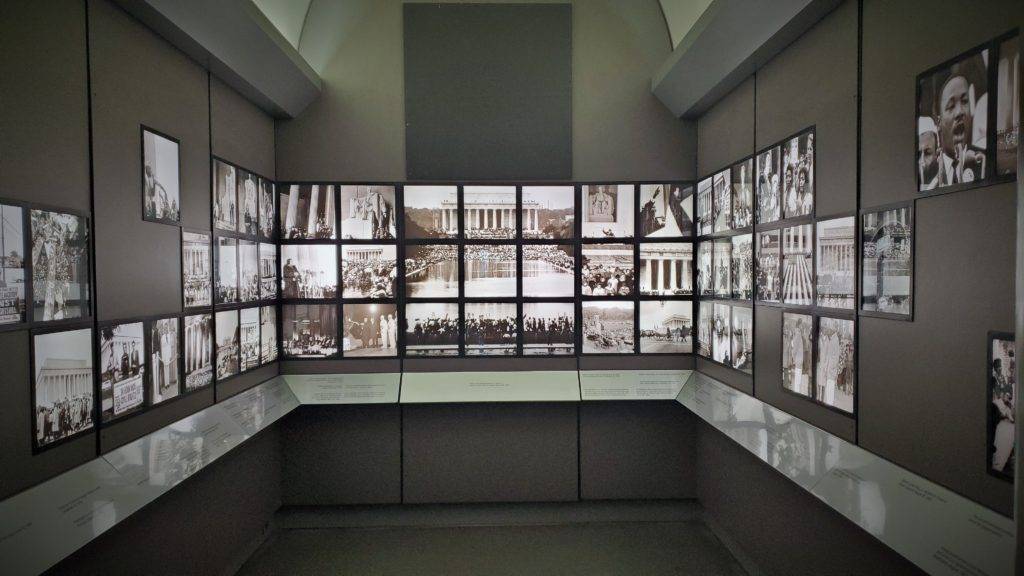
Despite its small size, this museum was a powerful reminder that the memorial isn’t just about honoring Lincoln’s presidency: more importantly, it is a symbol of the right to freedom and equality that all Americans should be able to enjoy, regardless of race or background.
The Thomas Jefferson Memorial Museum
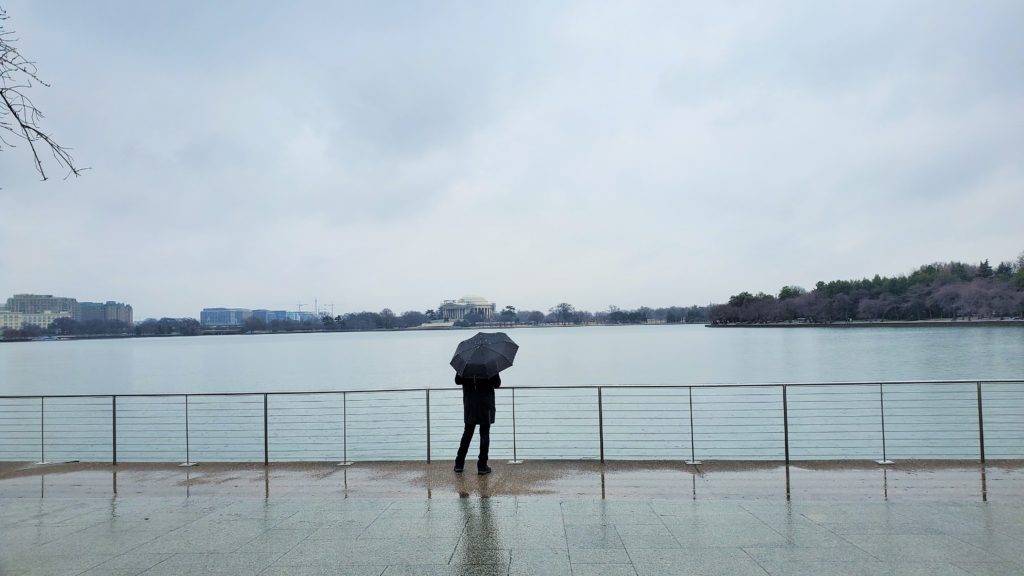
On the far side of the Tidal Basin stands the Thomas Jefferson Memorial. Despite its roof being under construction for nearly two years, the memorial’s interior is still open to the public! And while the exterior grandeur of this memorial is hidden beneath scaffolding, the inside of the dome is still an impressive sight.
In the center of the round, vaulted room stands a towering statue of Thomas Jefferson holding the Declaration of Independence in his hand. When the scaffolding is clear, Jefferson’s gaze goes out to the water of the Tidal Basin, similar to how Lincoln’s statue looks on the Reflection Pool.
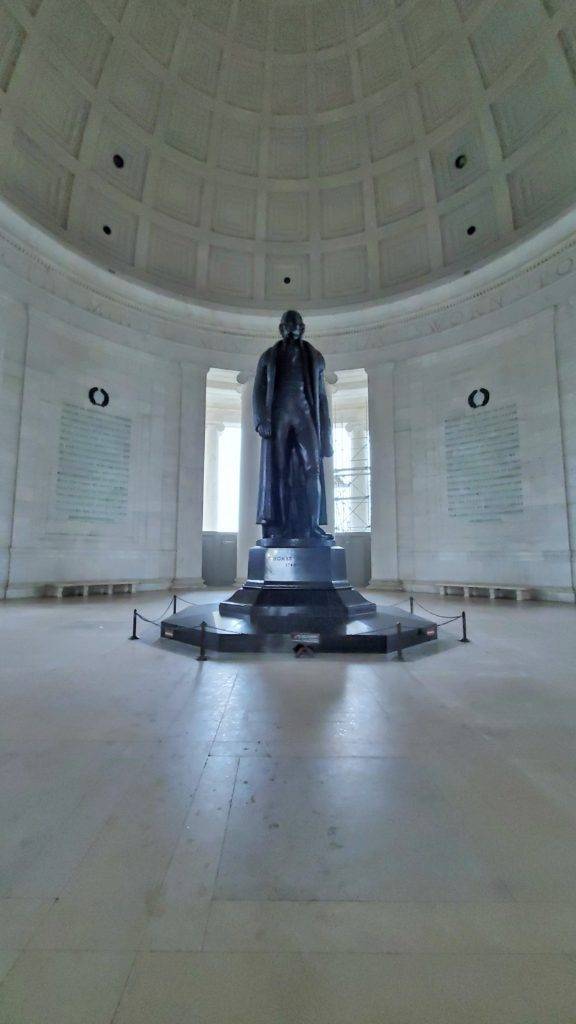
The walls and pillars of the structure are white Georgia marble like the Lincoln Memorial, but the floors are made of pink Tennessee marble instead. On the walls, four giant inscriptions are carved into the marble, quoting Jefferson’s writings about slavery, freedom of religion, the Constitution, and more.
However, to really get to know our third president, be sure to check out the museum below.
Finding the “Hidden” Museum
Similar to the Lincoln Memorial, you can find the Jefferson Memorial’s “hidden” museum below the main monument. On the top level, there is a door on the right leading to an elevator, which will take you down to the museum, restrooms, and gift shop. Otherwise, you can enter through a set of exterior doors on the lower level.
Exploring the Thomas Jefferson Memorial Museum
Once again, this president’s museum is one room packed with information about his life. But unlike Lincoln’s museum, Jefferson’s focuses more on his personal life and interests, which included music, architecture, and science, among others.
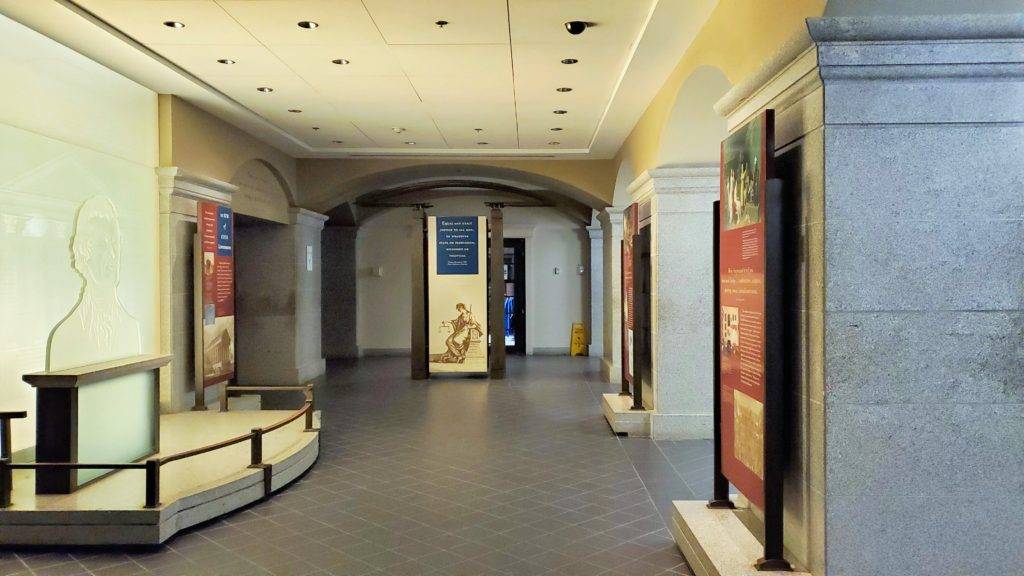
The most prominent feature here is a wall-length timeline of Jefferson’s pursuits, including his time as president, a statesman, an emissary, and even his time at the gorgeous Monticello.
Jefferson did many impressive things throughout his career, like founding the University of Virginia, signing the act that prohibited slave importation, becoming president of the American Philosophical Society, and obviously, being elected as America’s 3rd president.
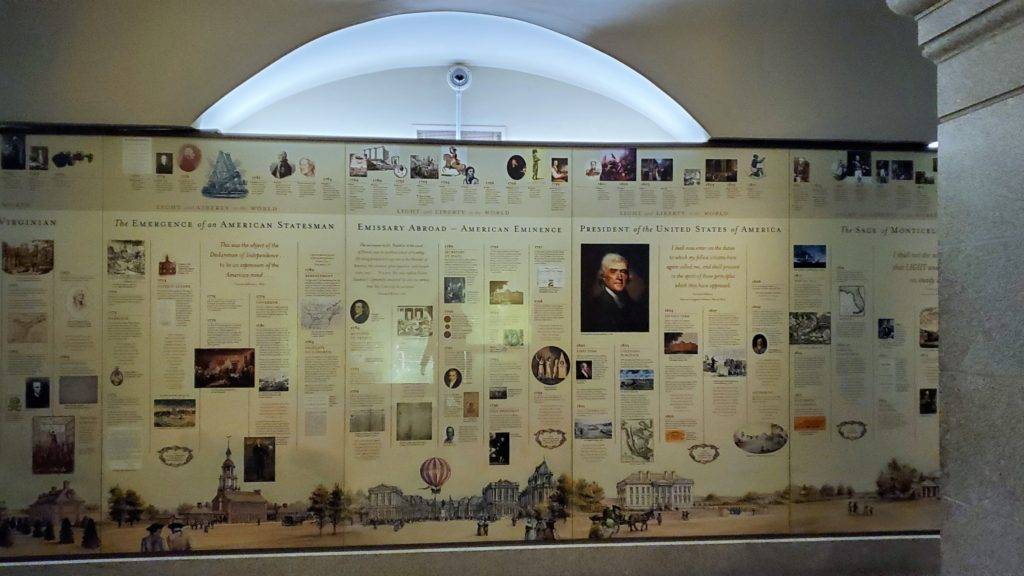
However, this museum also points out Jefferson’s flaws, including his unwillingness to free his own slaves (despite claiming slavery was wrong) and his removal of many Native Americans from their land after the Louisiana Purchase.
I appreciated the candor here and the reminder that it’s not enough to remember the “great” things our leaders have done. We must also look at their mistakes and take those actions into account to make our country a better place for everyone.
Final Thoughts on These Hidden Museums
Did you know these museums existed? If not, I hope you’ll take some extra time to go through them on your next visit to Washington, D.C.! They only took a few minutes, but they were extremely informative and felt so relevant to the issues we’re still facing today.
Thanks for stopping by the Mandala Traveler, and I hope you’ll come back next week for our next adventure! Be sure to sign up for the blog email list if you haven’t already so you’ll be notified when the newest posts come out!
Sign Up for Updates from Carried Away Travels
Questions or comments? Feel free to drop them below! And don’t forget to save and share this post so more people can find these “hidden” museums!
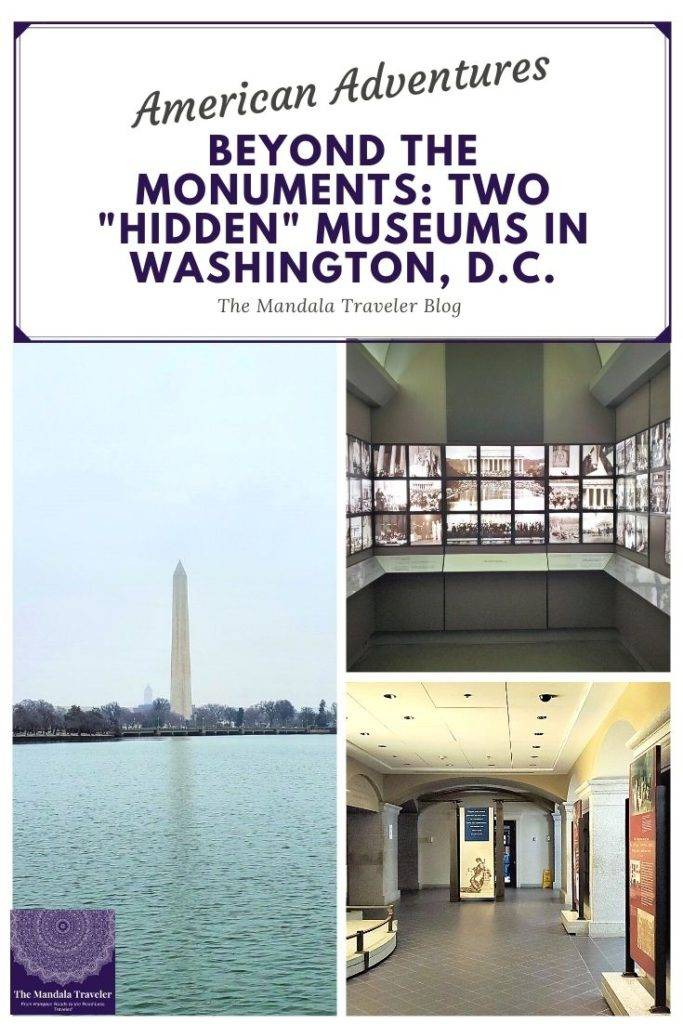
Stay safe out there and happy travels!
Ready for More? Check Out These Recent Posts!
- 11 Essential Things to Know Before Visiting Iceland

- My Top 12 Travel Tools For Saving Time & Money

- Dublin Exploration Hack: Big Bus Tours

- The Best 5-Day Colorado Itinerary

- How to Maximize Your Next Workcation: Top Tips

- Whale-Watching In Virginia Beach: An Epic Winter Tour!

Make Vacation Planning Easier
Download my Vacation Planner or Travel Blogger’s Planner today!
